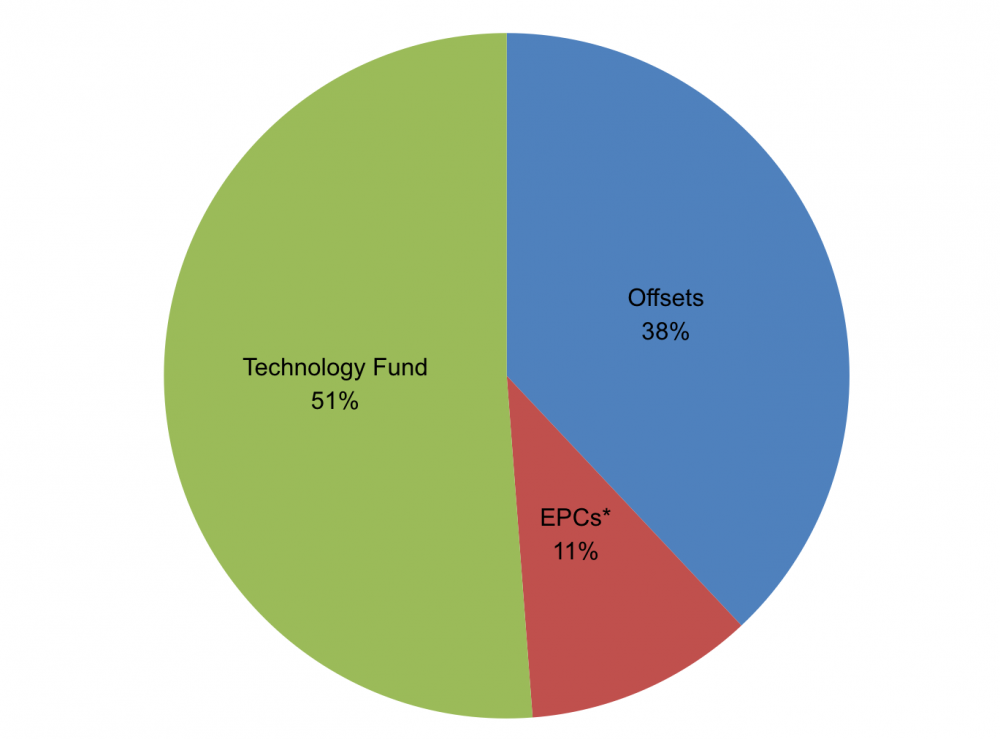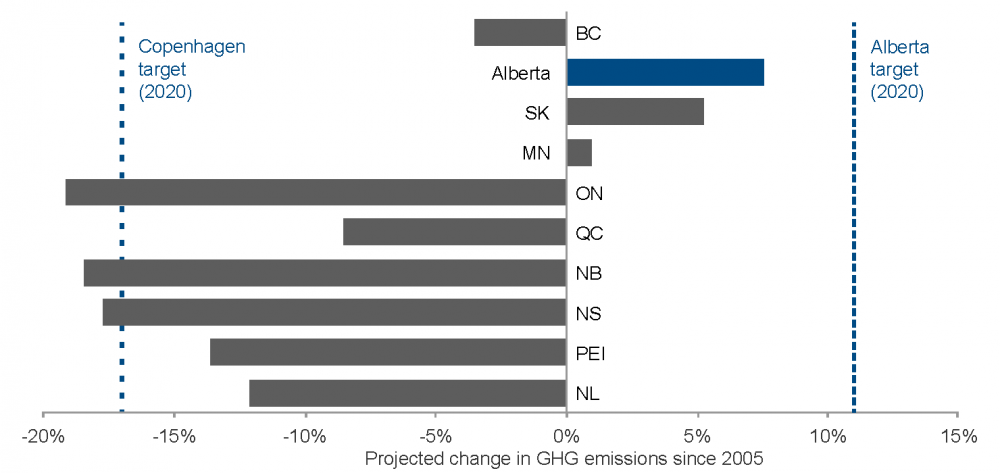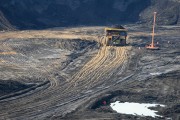This week, the Alberta Auditor General released the scathing results of his review of the province’s climate change strategy. Despite recommendations from two previous audits, the report found the government still lacks a definitive plan to meet its climate targets and to report progress.
Although this lack of action is disappointing, it’s positive to see the Auditor General highlighting many of the areas for improvement that we at Pembina have also identified since the program’s inception.
We recently reviewed the effectiveness of the Specified Gas Emitters Regulation (SGER) — the key climate regulation in the province. We found little progress toward reducing emissions, and Alberta remains out of step with the emissions reduction targets outlined in their 2008 strategy. It is clear from our assessment that a stronger SGER would be critically necessary if Alberta intends to adhere to their climate change strategy while allowing the forecasted industrial expansion in the province.
No reductions by design
A key factor to consider when evaluating the effectiveness of climate policy is that it has to result in an overall reduction in the emissions that lead to climate change. Our review of Alberta’s emissions shows that, following a brief dip due to the 2008 economic downturn, Alberta’s emissions have remained on the same growth trajectory as before the policy was implemented. In fact, Alberta’s overall climate strategy did not envision absolute emission reductions for decades into the future. The SGER system is based on emissions intensity (an efficiency metric) instead of requiring absolute emissions reductions; this allows for an overall growth in provincial emissions.
Analysis done by the World Resources Institute indicates that Intensity-based systems can lead to absolute reductions in emissions. The key to achieving these reductions is a level of stringency within the system that motivates facilities to make improvements.
Our analysis shows that, under the SGER, facilities primarily chose to pay for compliance with the regulation rather than making improvements. This signifies that the cost to make reductions at a facility is more than the cost of the current regulation. Increasing the cost of complying with this regulation is therefore necessary to motivate facilities to make real emissions reductions, which would then translate into progress towards meeting Alberta’s emission targets.
One piece of a bigger puzzle
Alberta’s climate policy focused on large industrial emitters. This was strategic as climate policy is complex and different approaches are needed in different economic sectors. However, working on reducing emissions in just one area of the economy will ultimately miss other opportunities to make significant reductions elsewhere.
Particularly missing from Alberta’s climate policy is any consideration of how Albertans use energy. As both the Canadian and Albertan governments are quick to point out, 70 to 80 per cent of emissions associated with oil comes from the final combustion of the fuel in our vehicles. It is therefore important for an effective climate policy to motivate people to change their habits when it comes to energy use. The government has recently confirmed that it is considering residential efficiency programs — a timely and essential move, as Alberta is the only jurisdiction in North America without an energy efficiency program. A recent report from the Alberta Energy Efficiency Alliance found that Alberta could achieve half its 2020 climate change target, save Albertans more than $1.5 billion per year in energy costs, and improve its environmental reputation by using energy more efficiently.
Lack of leadership could have domino effect
The Auditor General’s report highlights a central problem of Alberta’s climate change strategy: the government has not identified a clear plan to meet the province’s stated objectives. Without such a plan, there is no way the government can demonstrate that its commitment to minimizing Alberta’s contribution to climate change is achievable.
The Auditor General’s report highlights a central problem of Alberta’s climate change strategy: the government has not identified a clear plan to meet the province’s stated objectives.
It’s also worrying to see the government further delaying necessary steps to improve its climate policy. With SGER originally due for renewal in September, media reports have indicated the province had been working on plans to increase the carbon levy prior to that renewal date, to better incent emissions reductions and show critics that Alberta is taking steps to address its growing emissions problem.
Now, however, the government has pushed back the renewal deadline until December 31,2014 — well after the September PC leadership vote and the U.S. midterms (which could have a bearing on the Keystone XL pipeline decision). In the meantime, Alberta’s delay may keep the rest of the country waiting for the long-stalled federal oil and gas regulations, putting at risk Canada’s ability to curb emissions in line with its international climate commitments.
Big challenges demand real leadership
When PC leadership race delivers Alberta’s next premier, the successful candidate will face a very challenging task of demonstrating Alberta’s leadership on climate change, at a time when the province’s track record offers little reassurance that reducing emissions is a priority.
Countering that perception with evidence to the contrary — not just rhetoric — will be essential, given that Alberta’s emissions are growing faster than anywhere else in the country, and expanding oilsands production is the main culprit.
Strengthening the SGER, and pairing it with other emissions-reducing solutions such as a strong energy efficiency incentive, will be critical to demonstrate leadership on this challenging file and put Alberta on track to meet its stated climate goals.
So with 76 per cent of Albertans already supporting stronger limits on greenhouse gas emissions from industrial facilities, and with many companies already factoring much stronger carbon prices into their planning and cost accounting, all that remains is for the government to act.
Now that they’ve given themselves a comfortable window before the SGER is due for renewal, we hope the province will use that time to ensure the new regulations are strong enough to deliver the action that Albertans are calling for, the country needs, and our customers expect.











